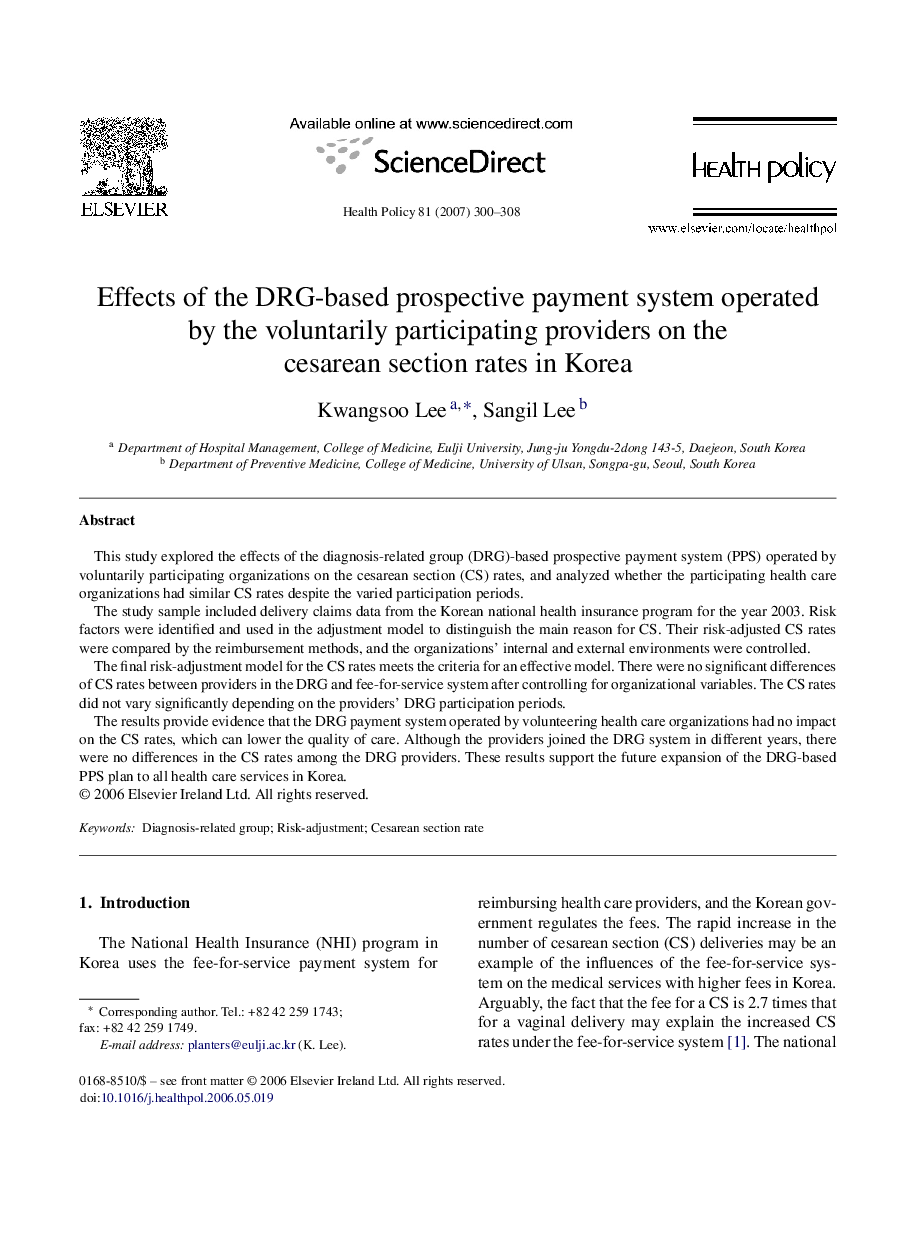| Article ID | Journal | Published Year | Pages | File Type |
|---|---|---|---|---|
| 4198892 | Health Policy | 2007 | 9 Pages |
This study explored the effects of the diagnosis-related group (DRG)-based prospective payment system (PPS) operated by voluntarily participating organizations on the cesarean section (CS) rates, and analyzed whether the participating health care organizations had similar CS rates despite the varied participation periods.The study sample included delivery claims data from the Korean national health insurance program for the year 2003. Risk factors were identified and used in the adjustment model to distinguish the main reason for CS. Their risk-adjusted CS rates were compared by the reimbursement methods, and the organizations’ internal and external environments were controlled.The final risk-adjustment model for the CS rates meets the criteria for an effective model. There were no significant differences of CS rates between providers in the DRG and fee-for-service system after controlling for organizational variables. The CS rates did not vary significantly depending on the providers’ DRG participation periods.The results provide evidence that the DRG payment system operated by volunteering health care organizations had no impact on the CS rates, which can lower the quality of care. Although the providers joined the DRG system in different years, there were no differences in the CS rates among the DRG providers. These results support the future expansion of the DRG-based PPS plan to all health care services in Korea.
